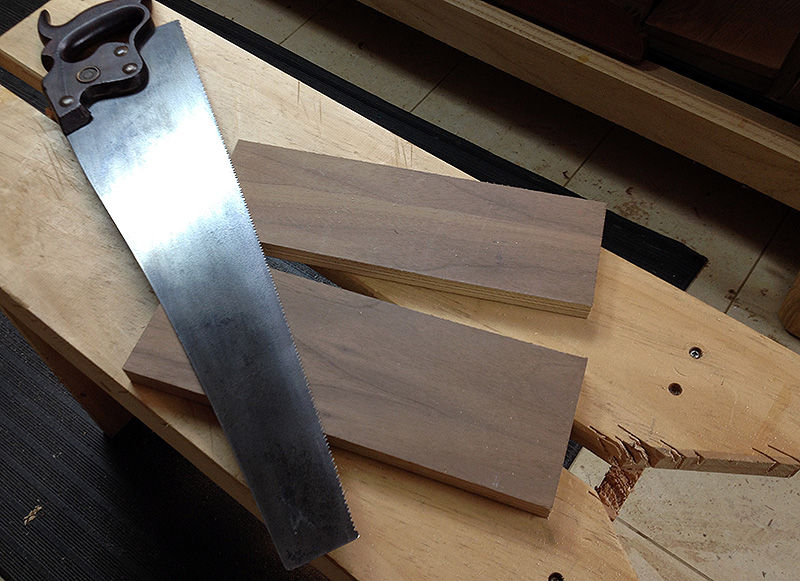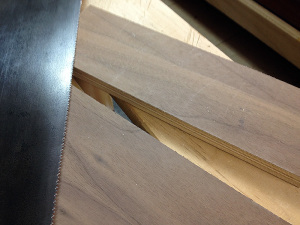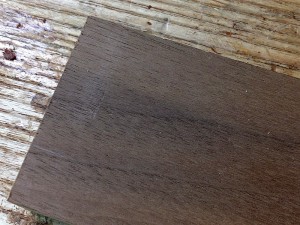Plywood Tearout? Grab a hand saw
I’m not sure where this comes from but it seems there is a myth floating around out there that you can’t cut plywood with a hand saw.

Oops, sorry I guess I broke the rules then.
 Using a 10 ppi panel saw filed crosscut on this 3/4 Walnut plywood produced not only a perfectly straight and square cut, but not tearing or fraying of the super thin face veneer either. Pictured here is the back side of the cut that usually tears the most as the saw exits the wood. I have gotten much worse quality cuts from my old table saw and even my fancy Festool track saw. No blue tape on the cut line, no zero clearance support underneath, just a well tuned saw with a tooth geometry well suited for the task at hand. In this case 20° rake, 15° fleam. The relaxed rake eases the saw teeth into and out of the wood and the fleam creates tiny little knives that slice across the grain making for very clean edges to the kerf. However I urge you not to focus on this as the exact formula for a plywood saw but experiment for yourself. I’m sure even better results could be had if I wanted to create a plywood saw, but I would rather keep this little guy more of a fine finish blade than anything more specific.
Using a 10 ppi panel saw filed crosscut on this 3/4 Walnut plywood produced not only a perfectly straight and square cut, but not tearing or fraying of the super thin face veneer either. Pictured here is the back side of the cut that usually tears the most as the saw exits the wood. I have gotten much worse quality cuts from my old table saw and even my fancy Festool track saw. No blue tape on the cut line, no zero clearance support underneath, just a well tuned saw with a tooth geometry well suited for the task at hand. In this case 20° rake, 15° fleam. The relaxed rake eases the saw teeth into and out of the wood and the fleam creates tiny little knives that slice across the grain making for very clean edges to the kerf. However I urge you not to focus on this as the exact formula for a plywood saw but experiment for yourself. I’m sure even better results could be had if I wanted to create a plywood saw, but I would rather keep this little guy more of a fine finish blade than anything more specific.
Makes you wonder where these “you can’t do that” claims come from eh? Is this a global conspiracy devised by the dregs of the woodworking guilds of yore trying to keep their trade secrets secret? I guess I’ll see if a horse head (or whatever the medieval guild equivalent is) shows up in my bed once this post is published.
 UPDATE: for that that asked, here is a shot of a crossgrain cut on the face veneer that shows a negligible difference to the cut quality.
UPDATE: for that that asked, here is a shot of a crossgrain cut on the face veneer that shows a negligible difference to the cut quality.


